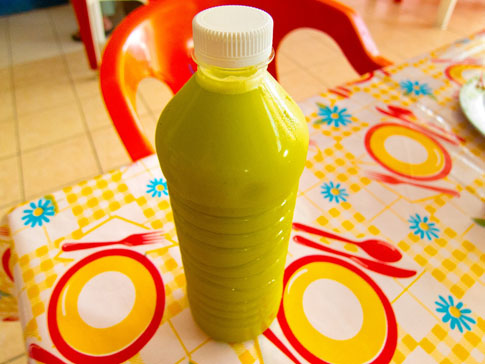Ethiopian Chicken Stew (Doro Wett)
Ethiopia
amantour
guides you to the best local dishes & drinks in
125+ cities. See map now



Now on Amazon.com!
Download our Oaxaca Food & Travel Guide to your Kindle, smartphone, or tablet and get the inside scoop on 40 delicious typical foods and drinks in Oaxaca, plus bonus recipes from a popular Oaxacan chef. $3.99
EYW wants your food photos!

EYW wants your food stories!
Hey guys I am a traveler who loves to explore different places around the world. I often visit outside of Canada, So whenever I have to travel around the world I always book my flight tickets from the... Read more
<< back to foods in Coastal Yucatan

What: Chaya is a green spinach-like plant indigenous to this part of Mexico, long used by the Mayans for food and for medicine, touted for everything from improving blood circulation and lowering cholesterol to treating arthritis and preventing coughs. Also known as “tree spinach,” the wild backyard bush is indisputably nutritious, exceptionally high in iron, protein, fiber, calcium, potassium, and several vitamins—a pretty great foil to all the fried tortillas and rich cochinita pibil you’re probably consuming here. While this leafy green turns up cooked into food quite often—in omelets, empanadas, and tamales; pureed into soups—you’ll most likely encounter it blended into a simple agua or jugo de chaya, the former a simple mix of water, chaya, and sugar; the latter usually incorporating some orange juice or other ingredients, too.
Good to know: Among all this love for chaya, there’s one caveat: When raw, the leaves can be toxic, containing a glucoside that can release cyanide. We have heard that vendors sometimes soak the leaves in vinegar or water to counteract the toxicity, or they just know to use a harmlessly small amount for typically uncooked preparations like agua de chaya. We never asked how the plant was prepared before going into any of the (many) aguas and jugos we consumed, and we never felt any ill effects.
Where: On Isla Mujeres, we picked up some jugo de chaya from a small jugueria inside the Mercado Municipal Javier Rojo Gómez Centro (Av. Vicente Guerrero betw. Lopez Mateos & Matamoros, map), where juice bottles of all colors beckoned.
When: The market opens daily at 7am; this jugueria stays open till about 3pm.
Order: This jugo de chaya (20p), a mix of chaya, celery, orange juice, and pineapple, is pleasantly sweet and definitely healthy…until, of course, you pair it with a fried panucho from Loncheria Nic-Teha across the aisle. Oh, well.
Alternatively: Also on Isla Mujeres, we dove into a massive, sweet agua de chaya (pic here) at El Poc Chuc (Calle Abasola at Av. Juarez, map)—a perfect accompaniment to its rich namesake pork barbecue—and tried chaya in a fancier green juice (and cooked into breakfast empanadas) at Lola Valentina (998-159-2187; Hidalgo Norte, map). Farther south—and less touristy—little cocina economica La Susanita (877-0298; Av. Juarez #5c, map) has omelets and scrambled eggs with chaya. In Tulum, eggs and drinks with chaya are a dime a dozen at the New Age-y breakfast spots downtown and along the beach; chaya drinks are also a given at any good Yucatecan restaurant, like Labná (998-892-3056; Margaritas 29, map) in downtown Cancún.
©2025 Eat Your World, LLC - All Rights Reserved